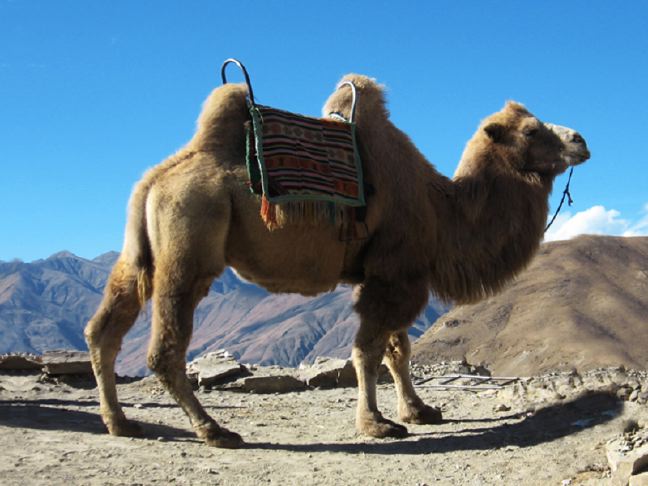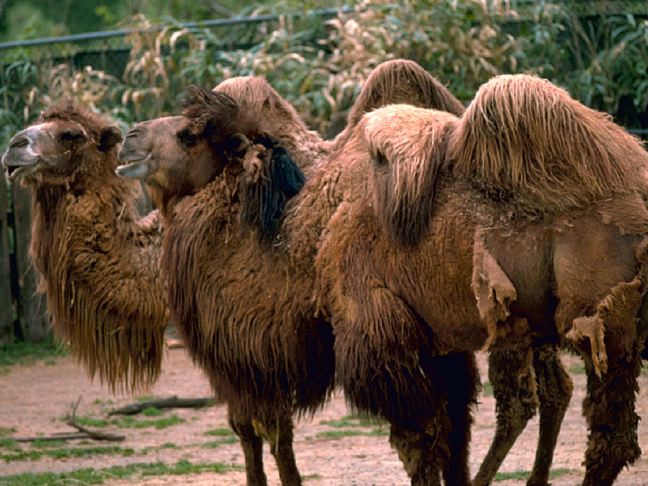|
Bactrian Camels

A Bactrian camel.
Image Source: Laura
/ License under Creative
Commons 2.0
Available in two desktop sizes:
1024 x 768 || 800
x 600
The things camels do are remarkable, but the conditions under which they do them
are truly amazing. Wild Bactrian camels were thought to be extinct until an expedition
discovered a small population in the Gobi Desert in 1957. [1] Human impact on their environment, hybridization,
hunting, predation by desert wolves, and extermination due to competition with livestock
herds have pushed wild Bactrian camel populations to the edge of extinction. [2]
Today wild Bactrian camels are endangered, some estimates, put their number at 400
to 700 animals in Mongolia and 200 in China. [3] By comparison, there are over 2 million domestic
Bactrian camels living on every continent around the world. [4] Bactrian camels were domesticated by 2500
B.C. in Bactria, present-day northern Iran and northeast Afghanistan. [5] Domesticated Bactrian camels had spread to
parts of southern Russia by 1700-1200 B.C., and Western Siberia by the 10th century
B.C. By 300 B.C., they were used in China on the original "silk route."
[6] An adult Bactrian camel stands 6-7.6 ft. high (180-230 cm) at the shoulders.
From the tip of their nose to their tail is 10 ft. (300 cm), plus they're tail length
of 20 in. (50 cm). An adult camel weighs 1320-2200 lbs. (600-1000 kg). [7]
The two humps of fat on a Bactrian camel weigh about 72 lbs. (32.7 kg) each and create
a natural saddle for the rider. Their lifespan is between 25-45 years. During the
winter, Bactrian camels have a shaggy dark brown or beige coat, which is sheds in
large sheets when warmer temperatures come in the spring. [8] A Bactrian camel can carry a load of up to
600 pounds over rough terrain at about 40 miles per day. [9]


Bactrian camels.
Image Source: Stolz, Gary M., U.S. Fish & Wildlife Service, Digital
Library System / License under Public Domain
Available in two desktop sizes:
1024 x
768 || 800 x 600
Camels prefer to walk; however, they can run at a speed of 10-20 mph (16-32 kph).
[10] They have excellent eyesight and smell, which can make wild camels hard
to approach. Although water is scarce, Bactrian camels are fairly good swimmers.
Life in the Gobi Desert is a study in extremes. During winter, temperatures can drop
as low as -22°F (-33°C). During summer, temperatures may reach as high as
122°F (50°C). Bactrian camels inhabit the steppes and desert plateaus of
the Gobi desert in Xinjiang province China and parts of Mongolia. [11] In the winter time camels can gather enough
moisture from the plants they eat to go as much as 50 days without water. They can
also eat small amounts of snow. However, in the summertime they may only go 5 days
without water. [12] To learn more about the camels amazing ability to store water click here.
All camels have pads on their feet that spread out when they walk. A Bactrian camel's
pads are firmer then dromedaries's pad. [13]
|